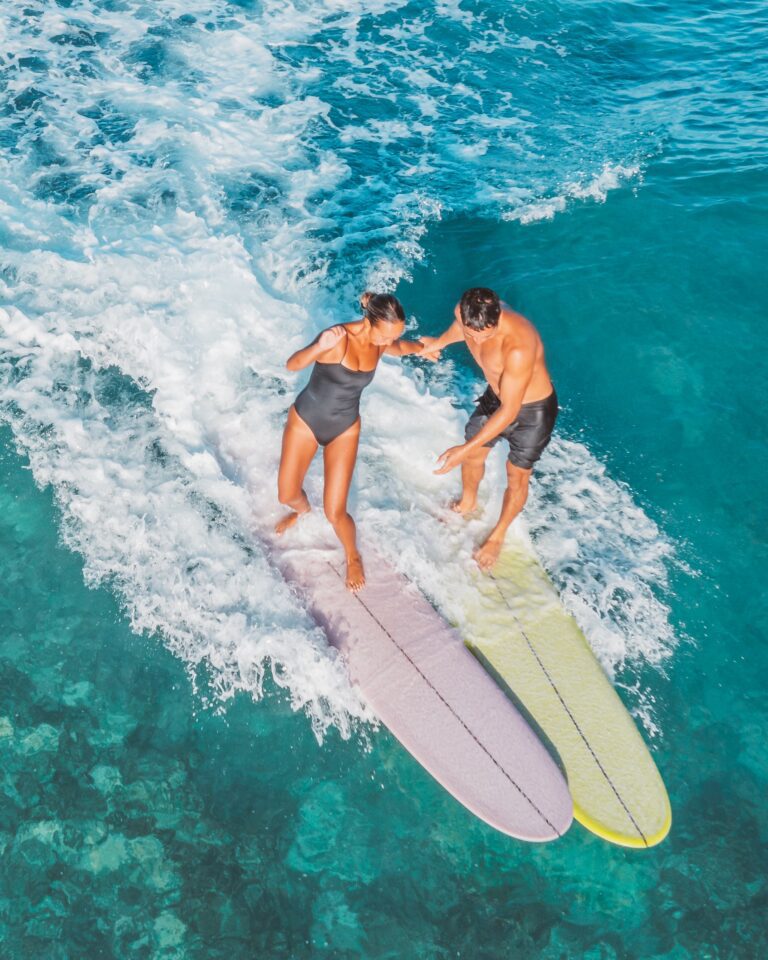Introduction
As waves crash against the shorelines worldwide, a unique synergy between surfing and coastal restoration emerges. Beyond the thrill of riding the waves, surfers share an intimate connection with the very environments they frequent. In this article, we delve into the symbiotic relationship between surfing and coastal restoration projects, exploring how this exhilarating sport is not just about catching waves but also about healing and preserving the fragile coastal ecosystems.
Surfing and Coastline Health
Surfers share an intimate bond with coastal environments, as their playgrounds are the waves that crash against these shores. Their daily communion with the ocean instills a deep understanding of the fragility and importance of coastal ecosystems. Surfers witness firsthand the effects of pollution, erosion, and climate change on these sensitive habitats. This firsthand experience makes them frontline observers of environmental changes, fostering a profound connection to the health of coastlines.
Environmental Stewardship in Surfing Culture
Surfing culture isn’t merely about riding waves; it’s a lifestyle deeply rooted in environmental stewardship. Surfers, driven by their love for the ocean, actively advocate for its protection. They organize beach clean-ups, raise awareness about plastic pollution, and promote sustainable practices both in and out of the water. This ethos is ingrained in surfing communities worldwide, where individuals strive to minimize their environmental footprint and safeguard the oceans for future generations.
Surfers as Advocates for Coastal Preservation
Surfers often stand at the forefront of coastal preservation and restoration efforts. Their passion for the ocean motivates them to take action. Numerous inspiring stories exist of surfers turned activists, campaigning for marine sanctuaries, lobbying against offshore drilling, and championing initiatives to restore degraded coastlines. Their advocacy extends beyond mere words; they actively engage in projects that aim to restore dunes, protect nesting grounds for marine life, and collaborate with scientists and policymakers to enact change.
Surfers’ tireless efforts serve as a powerful reminder that individual actions can spark collective change. Their stories of dedication and activism resonate, inspiring communities worldwide to join hands in safeguarding our precious coastal ecosystems.

Coastal Restoration Projects Around the Globe
Coastal restoration initiatives span the globe, aiming to revive and preserve fragile ecosystems while safeguarding communities against environmental threats. From marshlands to mangroves, various projects showcase the success of concerted restoration efforts.
Successful Restoration Projects and Outcomes
One standout project is the Mississippi River Delta restoration in the United States. This initiative focuses on rebuilding wetlands and barrier islands, providing crucial protection against storms and erosion. Its success lies in the strategic use of sediment diversions and marsh creation, fostering habitat for diverse wildlife while fortifying the coastline against the impacts of climate change.
Another noteworthy project is the Great Barrier Reef Restoration in Australia. Efforts here center on coral restoration through techniques like coral nurseries and transplanting, aiming to combat coral bleaching and enhance reef resilience. These endeavors have shown promising results in revitalizing damaged sections and supporting marine biodiversity.
Emphasis on Community Involvement and Volunteer Efforts
The success of these projects isn’t solely rooted in technical expertise but also in robust community involvement. Engaging local communities and volunteers plays a pivotal role in the sustainability of coastal restoration. Community members often act as stewards, actively participating in planting mangroves, cleaning beaches, and monitoring wildlife, fostering a sense of ownership and responsibility towards their coastal environments.
Volunteer-driven initiatives, such as beach cleanups and habitat restoration programs, amplify the impact of larger projects. Organizations collaborate with volunteers worldwide, empowering individuals to contribute directly to the preservation and restoration of coastal ecosystems. This collective effort not only enhances the effectiveness of restoration projects but also raises awareness and fosters a deeper connection to coastal environments.
By highlighting the success stories of these restoration endeavors and underscoring the significance of community engagement, these projects serve as inspiring examples of how collaborative efforts can rejuvenate and protect our precious coastal ecosystems.



